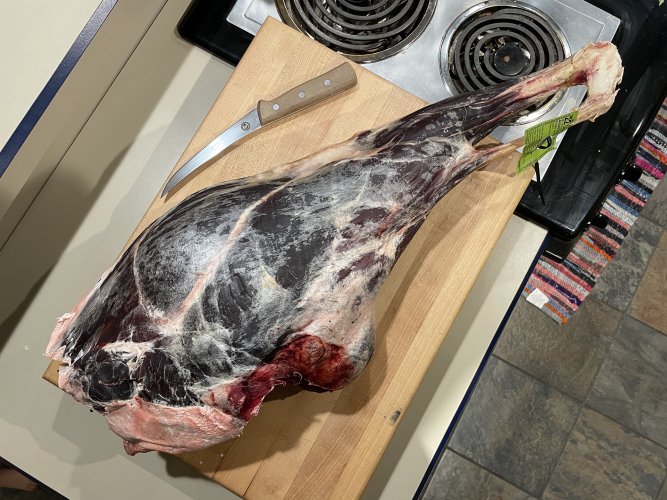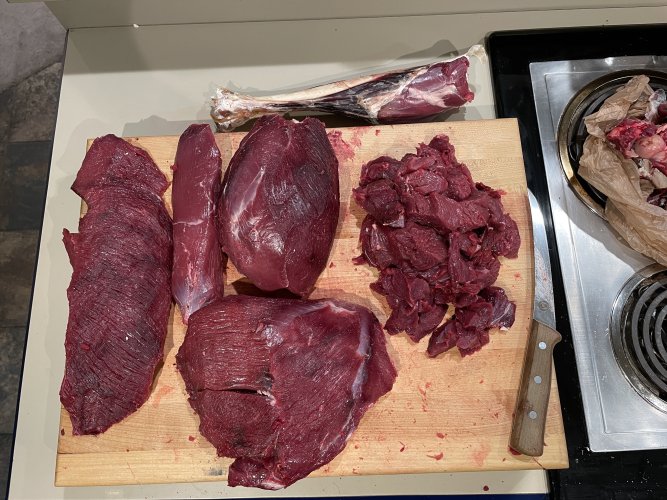D
Deleted member 52098
Guest
thanks all, looking forward to diving in and checking out all the suggestions. Hopefully I'll actually have elk to process next year ha
Follow along with the video below to see how to install our site as a web app on your home screen.
Note: This feature may not be available in some browsers.
I also recommend a small meat hook. Not the kind for hanging meat, but the handheld ones that grab meat. They are $8 on Amazon. Save your fingers and keeps a hand clean.My advice for OP is not just a sharp knife, but a long and very sharp boning style knife. Plus a small sharpener to touch things up as you go. Trimming silver skin is the pits, but a slender, sharp knife helps loads.
As others have said, just follow the muscle groups. I butchered my first deer on my own as an adult and it isn’t as difficult as one might think.
Better keep those shanks whole and cut them off at the knee for the slow cooker. Grinding them bits is a serious offense.
I like to leave it in whole muscle groups verses cutting steaks. You never know what you are going to want to make a few months from now. So you can just pull out a whole muscle “roast” and cut it down further for the weeks meals. On elk or bigger I make it into a portion size for a family of 4 but same principle.

